Vert
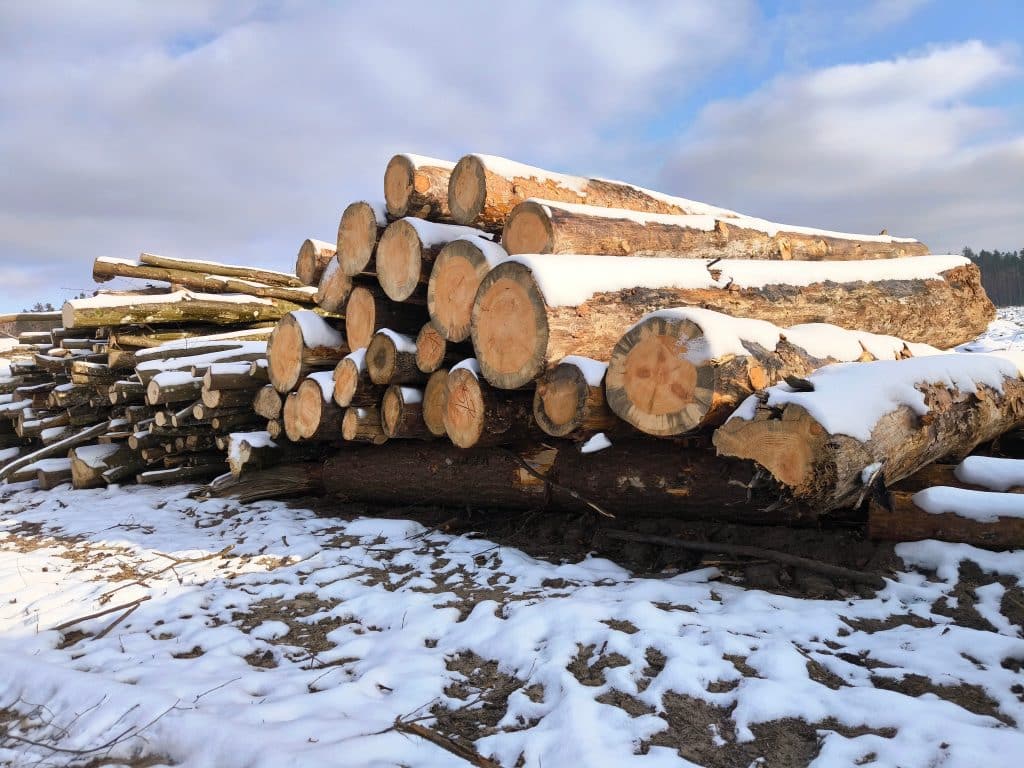
Le bois est le seul grand matériau de construction qui pousse naturellement et qui est renouvelable. Avec la pression croissante pour réduire l'empreinte carbone de l'environnement bâti, les concepteurs de bâtiments sont de plus en plus appelés à équilibrer les objectifs de fonction et de coût d'un bâtiment avec un impact réduit sur l'environnement. Le bois peut contribuer à cet équilibre. De nombreuses études d'évaluation du cycle de vie réalisées dans le monde entier ont montré que les produits en bois présentent des avantages environnementaux évidents par rapport à d'autres matériaux de construction, et ce à tous les stades. Les bâtiments en bois permettent de réduire les émissions de gaz à effet de serre, la pollution de l'air, les volumes de déchets solides et l'utilisation des ressources écologiques.
Efficacité énergétique
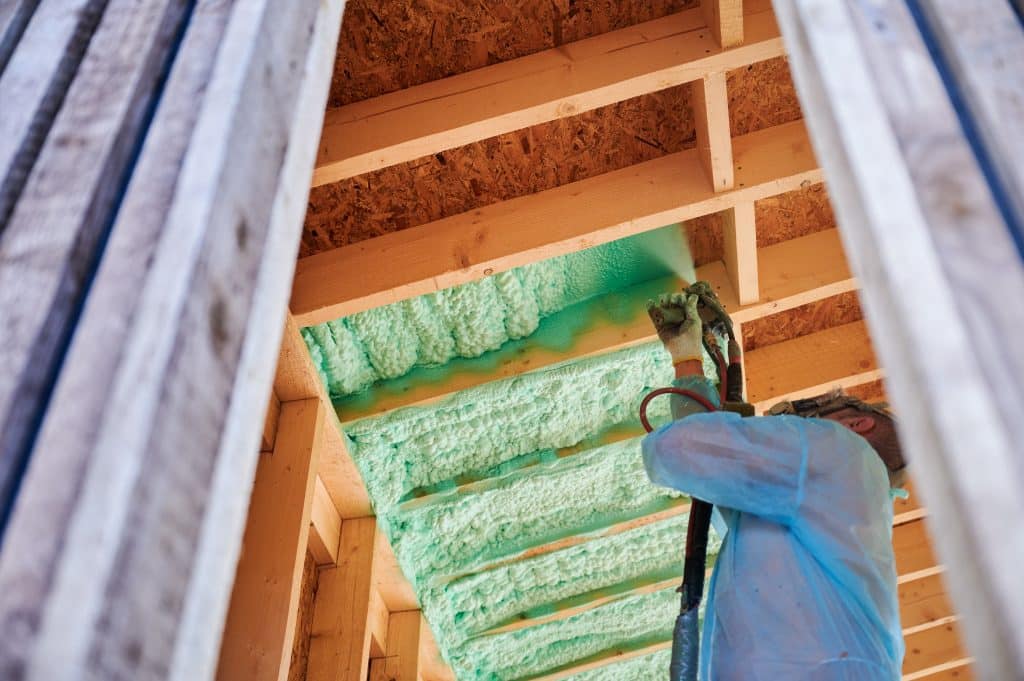
On estime que 30 à 40 % de l'énergie utilisée en Amérique du Nord est consommée par les bâtiments. Au Canada, la majorité de l'énergie opérationnelle des bâtiments résidentiels est fournie par le gaz naturel, le mazout ou l'électricité, et est consommée pour le chauffage des locaux. Étant donné que les bâtiments sont une source importante de consommation d'énergie et d'émissions de gaz à effet de serre au Canada, l'efficacité énergétique dans le secteur des bâtiments est essentielle pour atteindre les objectifs d'atténuation du changement climatique. Comme le souligne le Cadre pancanadien sur la croissance propre et le changement climatique, les gouvernements fédéral, provinciaux et territoriaux se sont engagés à investir dans des initiatives visant à favoriser l'efficacité énergétique des maisons et des bâtiments, ainsi que dans des programmes d'étalonnage et d'étiquetage énergétique. Malgré le nombre croissant de choix offerts aux consommateurs, la manière la plus rentable d'améliorer la performance énergétique des bâtiments est restée inchangée au fil des décennies : - maximiser la performance thermique de l'enveloppe du bâtiment en ajoutant plus d'isolation et en réduisant les ponts thermiques ; et - augmenter l'étanchéité à l'air de l'enveloppe du bâtiment. L'enveloppe du bâtiment est généralement définie comme l'ensemble des éléments qui séparent l'espace conditionné de l'espace non conditionné (air extérieur ou sol). La performance thermique et l'étanchéité à l'air de l'enveloppe du bâtiment (également connue sous le nom d'enceinte du bâtiment) ont une incidence sur l'efficacité énergétique de l'ensemble du bâtiment et influencent de manière significative la quantité de pertes et de gains de chaleur. Les codes et normes du bâtiment et de l'énergie au Canada ont fait ou font actuellement l'objet de révisions, et les exigences minimales en matière de performance thermique pour les enveloppes de bâtiments à ossature en bois sont désormais plus strictes. Les bâtiments les plus efficaces sur le plan énergétique sont construits avec des matériaux qui résistent au flux de chaleur et sont construits avec précision pour tirer le meilleur parti de l'isolation et des barrières d'air. Pour maximiser l'efficacité énergétique, les murs extérieurs et les toits doivent être conçus avec des matériaux d'ossature qui résistent au flux de chaleur et doivent inclure des pare-air continus, des matériaux d'isolation et des pare-intempéries pour empêcher les fuites d'air à travers l'enveloppe du bâtiment. La résistance au flux de chaleur des assemblages de l'enveloppe du bâtiment dépend des caractéristiques des matériaux utilisés. Les assemblages isolés ne sont généralement pas homogènes dans l'ensemble de l'enveloppe du bâtiment. Dans les murs ou les toits à ossature légère, les éléments d'ossature se trouvent à intervalles réguliers et, à ces endroits, le taux de transfert de chaleur est différent de celui des espaces entre les éléments d'ossature. Les éléments d'ossature réduisent la résistance thermique de l'ensemble du mur ou du plafond. Le taux de transfert de chaleur à l'emplacement des éléments d'ossature dépend des propriétés thermiques ou isolantes du matériau d'ossature. Le taux élevé de transfert de chaleur à l'emplacement des éléments d'ossature est appelé pont thermique. Les éléments d'ossature d'un mur ou d'un toit peuvent représenter 20 % ou plus de la surface d'un mur extérieur ou d'un toit, et comme la performance thermique de l'ensemble dépend de l'effet combiné de l'ossature et de l'isolation, les propriétés thermiques des matériaux d'ossature peuvent avoir un effet significatif sur la résistance thermique globale (effective) de l'ensemble. Le bois est un isolant thermique naturel grâce aux millions de minuscules poches d'air que contient sa structure cellulaire. La conductivité thermique augmentant avec la densité relative, le bois est un meilleur isolant que les matériaux de construction denses. En ce qui concerne les performances thermiques, les bâtiments à ossature bois sont intrinsèquement plus efficaces que les autres matériaux de construction courants, principalement en raison de la réduction des ponts thermiques à travers les éléments structurels en bois, y compris les montants, les colonnes, les poutres et les planchers en bois. Le bois perd moins de chaleur par conduction que les autres matériaux de construction et les techniques de construction à ossature bois permettent une large gamme d'options d'isolation, y compris l'isolation des cavités des montants et l'isolation rigide extérieure. La recherche et le suivi des bâtiments démontrent de plus en plus l'importance de la réduction des ponts thermiques dans les nouvelles constructions et dans les bâtiments existants. L'impact des ponts thermiques peut contribuer de manière significative à la consommation d'énergie de l'ensemble du bâtiment, au risque de condensation sur les surfaces froides et au confort des occupants. Il est logique de se concentrer sur l'enveloppe du bâtiment et la ventilation au moment de la construction, car il est difficile d'apporter des modifications à ces systèmes à l'avenir. Les bâtiments à haute performance coûtent généralement plus cher à construire que les constructions conventionnelles, mais le prix d'achat plus élevé est compensé, du moins en partie, par des coûts de consommation d'énergie plus faibles tout au long du cycle de vie. De plus, les bâtiments à haute performance sont souvent de meilleure qualité et plus confortables à vivre et à travailler. Rendre les bâtiments plus efficaces sur le plan énergétique s'est également avéré être l'une des possibilités les moins coûteuses de contribuer aux objectifs de réduction de la consommation d'énergie et d'atténuation du changement climatique. Plusieurs programmes de certification et d'étiquetage sont à la disposition des constructeurs et des consommateurs pour réduire la consommation d'énergie dans les bâtiments. Ressources naturelles Canada (RNCan) administre le programme R-2000, qui vise à réduire les besoins énergétiques des maisons de 50 % par rapport à une maison construite selon le code. Un autre programme administré par RNCan, ENERGY STAR®, vise à améliorer l'efficacité énergétique de 20 à 25 % par rapport au code. Le système d'évaluation ÉnerGuide estime les performances énergétiques d'une maison et peut être utilisé à la fois pour les maisons existantes et dans la phase de planification d'une nouvelle construction. D'autres programmes de certification et systèmes d'étiquetage ont des objectifs de performance fixes. La maison passive est une norme rigoureuse pour l'efficacité énergétique des bâtiments, qui vise à réduire la consommation d'énergie et à améliorer les performances globales. La charge de chauffage des locaux doit être inférieure à 15 kWh/m2 et l'étanchéité à l'air doit être inférieure à 0,6 renouvellement d'air par heure à 50 Pa, ce qui permet de construire des bâtiments à très faible consommation d'énergie qui nécessitent jusqu'à 90 % d'énergie de chauffage et de refroidissement en moins que les bâtiments conventionnels. Le NetZero Energy Building Certification, un programme géré par l'International Living Future Institute, est un programme basé sur la performance et exige que le bâtiment ait une consommation énergétique nette nulle pendant douze mois consécutifs. Green Globes et Leadership in Energy and Environmental Design (LEED) sont d'autres systèmes d'évaluation des bâtiments qui prévalent sur le marché de la conception et de la construction de bâtiments. Pour plus d'informations, voir les ressources suivantes : Performance thermique des assemblages à ossature légère - IBS No.5 (Conseil canadien du bois) Code national de l'énergie pour les bâtiments Ressources naturelles Canada BC Housing Maison passive Canada Green Globes Conseil canadien du bâtiment durable
Changement climatique
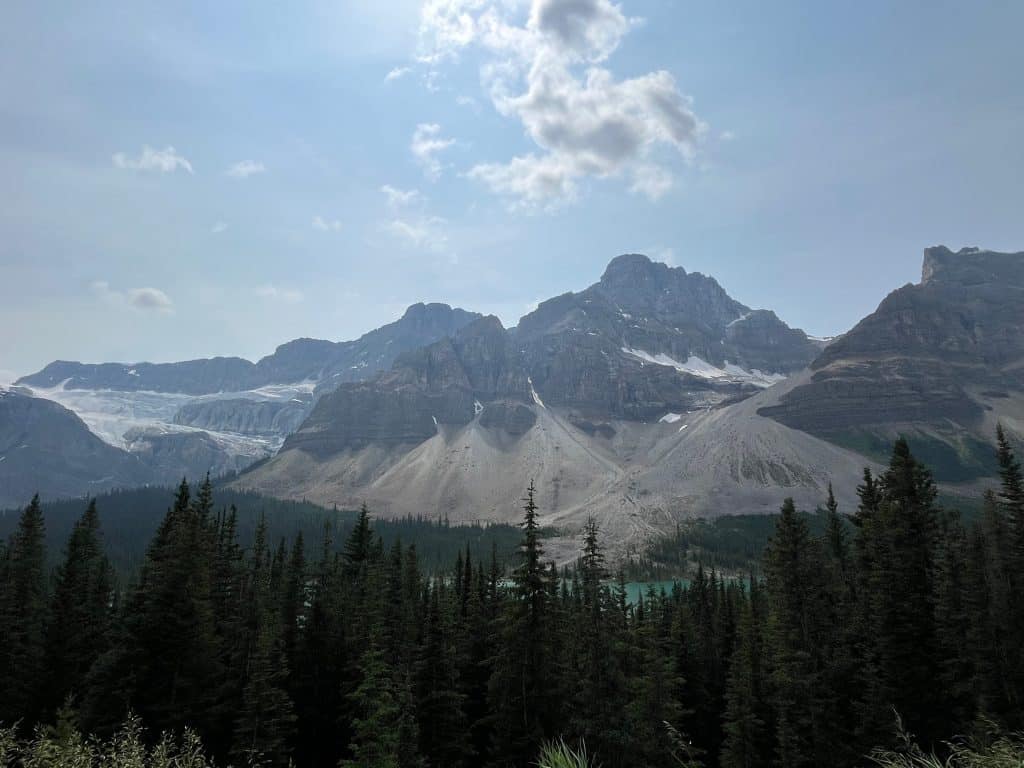
Les préoccupations liées au changement climatique encouragent la décarbonisation du secteur du bâtiment, y compris l'utilisation de matériaux de construction responsables de moins d'émissions de gaz à effet de serre (GES) et l'amélioration des performances opérationnelles tout au long du cycle de vie des bâtiments. Responsable de plus de 10 % des émissions totales de GES au Canada, le secteur du bâtiment joue un rôle important dans l'atténuation du changement climatique et l'adaptation à celui-ci. La réduction de l'impact des bâtiments sur le changement climatique offre un rendement environnemental élevé pour un investissement économique relativement faible. Le gouvernement du Canada, en tant que signataire de l'Accord de Paris, s'est engagé à réduire les émissions de GES du Canada de 30 % par rapport aux niveaux de 2005 d'ici 2030. En outre, le Cadre pancanadien sur la croissance propre et le changement climatique reconnaît que les produits forestiers et ligneux peuvent contribuer à la stratégie nationale de réduction des émissions en renforçant le stockage du carbone dans les forêts, en augmentant l'utilisation du bois dans la construction, en produisant du carburant à partir de la bioénergie et des bioproduits et en favorisant l'innovation dans le développement de produits biologiques et les pratiques de gestion forestière. Le Groupe d'experts intergouvernemental sur l'évolution du climat (GIEC) se fait également l'écho de l'importance du secteur de la sylviculture et des produits du bois en tant que composante essentielle de l'atténuation des effets du changement climatique, en affirmant qu'une stratégie de gestion durable des forêts visant à maintenir ou à augmenter les stocks de carbone forestier tout en produisant du bois, des fibres ou de l'énergie, génère le plus grand bénéfice durable pour atténuer le changement climatique. En outre, le GIEC déclare que "les options d'atténuation du secteur forestier comprennent l'extension de la rétention de carbone dans les produits ligneux récoltés, la substitution de produits et la production de biomasse pour la bioénergie". L'industrie forestière canadienne s'engage à éliminer 30 mégatonnes de dioxyde de carbone (CO2) par an d'ici 2030, ce qui équivaut à 13 % des engagements nationaux du Canada dans le cadre de l'Accord de Paris. Plusieurs mécanismes seront utilisés pour relever ce défi, notamment : le déplacement de produits, en utilisant des produits biosourcés à la place de produits et de sources d'énergie dérivés de combustibles fossiles ; les pratiques de gestion forestière, y compris l'utilisation accrue, l'amélioration de l'utilisation des résidus et de la planification de l'utilisation des terres, et l'amélioration de la croissance et des rendements ; la prise en compte des réservoirs de carbone des produits biosourcés à longue durée de vie ; et une plus grande efficacité dans les processus de fabrication des produits du bois Le Canada abrite 9 pour cent des forêts du monde, qui ont la capacité d'agir comme d'énormes puits de carbone en absorbant et en stockant le carbone. Chaque année, le Canada exploite moins d'un demi pour cent de ses terres forestières, ce qui a permis à la couverture forestière du pays de rester constante au cours du siècle dernier. La gestion durable des forêts et les exigences légales en matière de reboisement permettent de maintenir ce vaste réservoir de carbone. Une forêt est un système naturel considéré comme neutre en carbone tant qu'elle est gérée de manière durable, ce qui signifie qu'elle doit être reboisée après la récolte et ne pas être convertie à d'autres utilisations. Le Canada possède certaines des réglementations les plus strictes au monde en matière de gestion forestière, exigeant une régénération réussie après l'exploitation des forêts publiques. Lorsqu'elles sont gérées de manière responsable, les forêts constituent une ressource renouvelable qui sera disponible pour les générations futures. Le Canada est également un leader mondial en matière de certification forestière volontaire par une tierce partie, ce qui renforce l'assurance d'une gestion durable des forêts. Les programmes de gestion durable des forêts et les systèmes de certification s'efforcent de préserver la quantité et la qualité des forêts pour les générations futures, de respecter la diversité biologique des forêts et l'écologie des espèces qui y vivent, ainsi que les communautés concernées par les forêts. Les entreprises canadiennes ont obtenu la certification d'une tierce partie sur plus de 150 millions d'hectares de forêts, ce qui représente la plus grande superficie de forêts certifiées au monde. La forêt représente un réservoir de carbone, stockant le carbone biogénique dans les sols et les arbres. Le carbone reste stocké jusqu'à ce que les arbres meurent et se décomposent ou brûlent. Lorsqu'un arbre est coupé, 40 à 60 % du carbone biogénique reste dans la forêt ; le reste est retiré sous forme de grumes et une grande partie est transférée dans le réservoir de carbone des produits du bois dans l'environnement bâti. Les produits du bois continuent à stocker ce carbone biogénique, souvent pendant des décennies dans le cas des bâtiments en bois, retardant ou empêchant la libération d'émissions de CO2. Les produits du bois et les systèmes de construction ont la capacité de stocker de grandes quantités de carbone ; 1 m3 de bois d'œuvre S-P-F stocke environ 1 tonne d'équivalent CO2. La quantité de carbone stockée dans un produit en bois est directement proportionnelle à la densité du bois. Au Canada, une maison unifamiliale moyenne stocke près de 30 tonnes d'équivalent CO2 dans les produits du bois utilisés pour sa construction. La plupart des produits de construction biosourcés stockent en fait plus de carbone dans la fibre de bois qu'ils n'en libèrent au cours des phases de récolte, de fabrication et de transport de leur cycle de vie. En général, les produits biosourcés, comme le bois qui pousse naturellement avec l'aide du soleil, ont des émissions intrinsèques plus faibles. Les émissions intrinsèques résultent des processus de production des matériaux de construction, depuis l'extraction ou la récolte des ressources jusqu'à la fin de vie, en passant par la fabrication, le transport et la construction. La bioénergie produite à partir de résidus biosourcés, tels que l'écorce d'arbre et la sciure de bois, est principalement utilisée pour générer de l'énergie pour la fabrication de produits en bois en Amérique du Nord. Les produits de construction en bois ont de faibles émissions de GES intrinsèques parce qu'ils sont cultivés à l'aide d'énergie solaire renouvelable, qu'ils utilisent peu d'énergie fossile pendant la fabrication et qu'ils ont de nombreuses options de fin de vie (réutilisation, recyclage, récupération d'énergie). Les produits du bois peuvent se substituer à d'autres matériaux de construction et sources d'énergie à plus forte intensité de carbone. Les émissions de gaz à effet de serre sont ainsi évitées en utilisant des produits du bois à la place d'autres produits de construction à plus forte intensité de gaz à effet de serre. Des facteurs de déplacement (kg de CO2 évité par kg de bois utilisé) ont été estimés pour calculer la quantité de carbone évitée grâce à l'utilisation de produits du bois dans la construction de bâtiments. Pour de plus amples informations, veuillez consulter les ressources suivantes : Addressing Climate Change in the Building Sector - Carbon Emissions Reductions (Conseil canadien du bois) Resilient and Adaptive Design Using Wood (Conseil canadien du bois) CWC Carbon Calculator Canada's Forest Products Industry "30 by 30" Climate Change Challenge (Association des produits forestiers du Canada) www.naturallywood.com www.thinkwood.com Building with wood = Proactive climate protection (Binational Softwood Lumber Council and State University of New York) Natural Resources Canada Pan-Canadian Framework on Clean Growth and Climate Change (Gouvernement du Canada) Intergovernmental Panel on Climate Change (Groupe d'experts intergouvernemental sur l'évolution du climat)
Analyse du cycle de vie
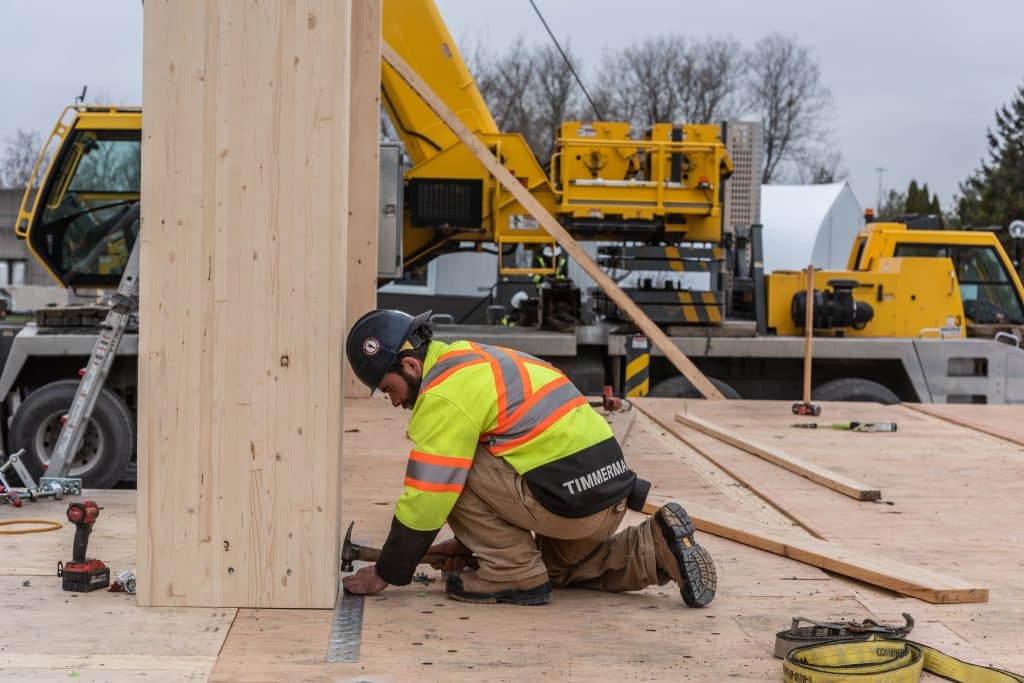
Les produits de construction et le secteur du bâtiment dans son ensemble ont un impact significatif sur l'environnement. Les instruments politiques et les forces du marché poussent de plus en plus les gouvernements et les entreprises à documenter et à rendre compte des impacts environnementaux et à suivre les améliorations. L'analyse du cycle de vie (ACV) est un outil qui permet de comprendre les aspects environnementaux liés à la construction, à la rénovation et à la modernisation des bâtiments et des ouvrages de génie civil. L'ACV est un outil d'aide à la décision qui permet d'identifier les approches de conception et de construction qui améliorent les performances environnementales. Plusieurs juridictions européennes, dont l'Allemagne, Zurich et Bruxelles, ont fait de l'ACV une exigence obligatoire avant la délivrance d'un permis de construire. En outre, l'application de l'ACV à la conception des bâtiments et à la sélection des matériaux est une composante des systèmes d'évaluation des bâtiments écologiques. L'ACV peut être utile aux fabricants, aux architectes, aux constructeurs et aux agences gouvernementales en fournissant des informations quantitatives sur les impacts environnementaux potentiels et en fournissant des données permettant d'identifier les domaines à améliorer. L'ACV est une approche basée sur la performance pour évaluer les aspects environnementaux liés à la conception et à la construction des bâtiments. L'ACV peut être utilisée pour comprendre les impacts environnementaux potentiels d'un produit ou d'une structure à chaque étape de sa vie, depuis l'extraction des ressources ou l'acquisition des matières premières, le transport, la transformation et la fabrication, la construction, l'exploitation, l'entretien et la rénovation jusqu'à la fin de vie. L'ACV est une méthodologie scientifique internationalement reconnue qui existe sous d'autres formes depuis les années 1960. Les exigences et les orientations relatives à la réalisation d'une ACV ont été établies par le biais de normes internationales consensuelles, à savoir les normes ISO 14040 et ISO 14044. L'ACV prend en compte tous les flux d'entrée et de sortie (matériaux, énergie, ressources) associés à un système de produits donné. Il s'agit d'une procédure itérative qui comprend la définition des objectifs et du champ d'application, l'analyse de l'inventaire, l'évaluation de l'impact et l'interprétation. L'analyse de l'inventaire, également connue sous le nom d'inventaire du cycle de vie (ICV), consiste en la collecte de données et le suivi de tous les flux d'entrée et de sortie au sein d'un système de produits. Des bases de données publiques sur l'ICV, telles que la base de données américaine sur l'inventaire du cycle de vie, sont accessibles gratuitement afin d'obtenir ces données. Au cours de la phase d'évaluation de l'impact de l'ACV, les flux de l'ICV sont traduits en catégories d'impact potentiel sur l'environnement à l'aide de techniques de modélisation environnementale théoriques et empiriques. L'ACV permet de quantifier les impacts environnementaux potentiels et les aspects d'un produit, tels que le potentiel de réchauffement de la planète, le potentiel d'acidification, le potentiel de réduction de la pollution, etc : le potentiel de réchauffement de la planète, le potentiel d'acidification, le potentiel d'eutrophisation, le potentiel d'appauvrissement de la couche d'ozone, le potentiel de smog, la consommation d'énergie primaire, la consommation de ressources matérielles et la production de déchets dangereux et non dangereux. Les concepteurs de bâtiments disposent d'outils d'ACV accessibles au public et faciles à utiliser. Ces outils permettent aux concepteurs d'obtenir rapidement des informations sur l'impact potentiel sur l'environnement d'une large gamme d'assemblages génériques de bâtiments ou d'élaborer eux-mêmes des évaluations complètes du cycle de vie des bâtiments. Les logiciels d'ACV offrent aux professionnels de la construction des outils puissants pour calculer les impacts potentiels du cycle de vie des produits ou des assemblages de construction et effectuer des comparaisons environnementales. Il est également possible d'utiliser l'ACV pour effectuer des comparaisons objectives entre des matériaux alternatifs, des assemblages et des bâtiments entiers, mesurées sur les cycles de vie respectifs et basées sur des indicateurs environnementaux quantifiables. L'ACV permet de comparer les compromis environnementaux associés au choix d'un matériau ou d'une solution de conception par rapport à un autre et, par conséquent, fournit une base efficace pour comparer les implications environnementales relatives de scénarios de conception de bâtiments alternatifs. Une ACV qui examine des options de conception alternatives doit garantir l'équivalence fonctionnelle. Chaque scénario de conception envisagé, y compris l'ensemble du bâtiment, doit répondre aux exigences du code du bâtiment et offrir un niveau minimum de performance technique ou d'équivalence fonctionnelle. Pour quelque chose d'aussi complexe qu'un bâtiment, cela signifie qu'il faut suivre et comptabiliser les intrants et les extrants environnementaux pour la multitude d'assemblages, de sous-assemblages et de composants de chaque option de conception. La longévité d'un système de construction a également un impact sur la performance environnementale. Les bâtiments en bois peuvent rester en service pendant de longues périodes s'ils sont conçus, construits et entretenus correctement. De nombreuses études d'ACV dans le monde ont démontré que les produits et systèmes de construction en bois peuvent présenter des avantages environnementaux par rapport à d'autres matériaux et méthodes de construction. FPInnovations a réalisé une ACV d'un bâtiment de quatre étages au Québec construit en bois lamellé-croisé (CLT). L'étude a évalué comment la conception en CLT se comparerait à un bâtiment fonctionnellement équivalent en béton et en acier de la même surface de plancher, et a révélé une performance environnementale améliorée dans deux des six catégories d'impact, et une performance équivalente dans les autres catégories. En outre, en fin de vie, les produits biosourcés peuvent faire partie d'un système de produits ultérieurs lorsqu'ils sont réutilisés, recyclés ou valorisés énergétiquement, ce qui peut réduire les incidences sur l'environnement et contribuer à l'économie circulaire. Cycle de vie des produits de construction en bois Photo source : CEI-Bois Pour de plus amples informations, veuillez consulter les ressources suivantes : www.naturallywood.com Athena Sustainable Materials Institute Building for Environmental and Economic Sustainability (BEES) FPInnovations. Analyse comparative du cycle de vie de deux bâtiments résidentiels à plusieurs étages : Cross-Laminated Timber vs. Concrete Slab and Column with Light Gauge Steel Walls, 2013. American Wood Council U.S. Life Cycle Inventory Database ISO 14040 Management environnemental - Analyse du cycle de vie - Principes et cadre ISO 14044 Management environnemental - Analyse du cycle de vie - Exigences et lignes directrices
Codes et normes
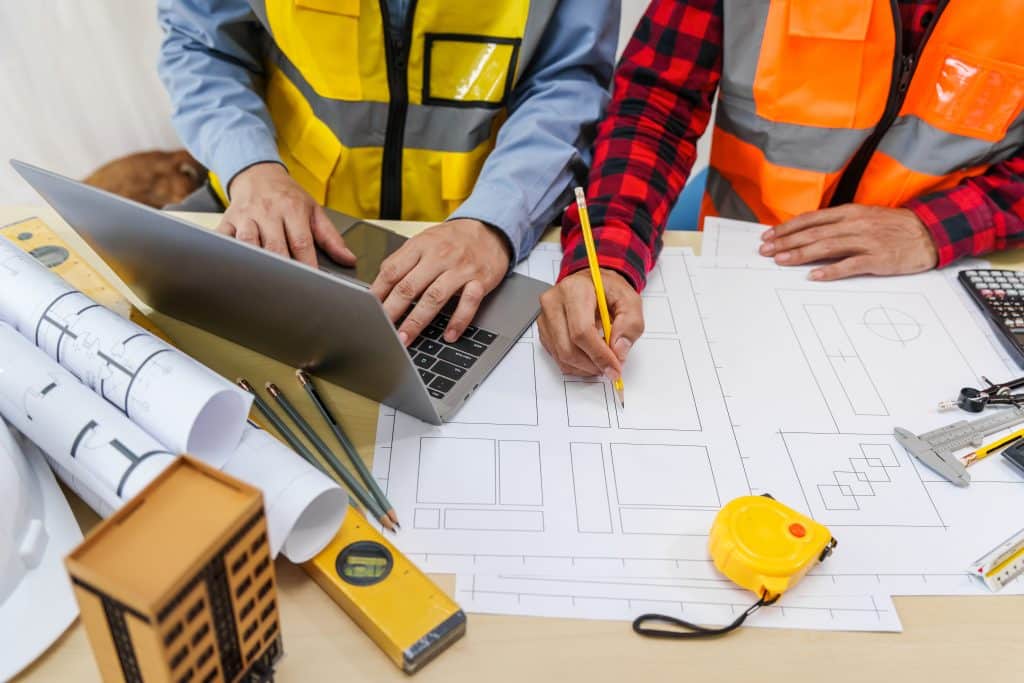
CODES ET NORMES DE CONSTRUCTION (LE SYSTÈME RÉGLEMENTAIRE) L'industrie de la construction est réglementée par des codes de construction qui s'appuient sur des normes de conception qui fournissent des informations sur la "manière" de construire avec du bois : Les normes de conception qui fournissent des informations sur la manière de construire en bois, les normes de produits qui définissent les caractéristiques des produits du bois pouvant être utilisés dans les normes de conception, et les normes d'essai qui définissent la méthodologie permettant d'établir les caractéristiques d'un produit du bois. Il s'agit notamment des domaines suivants CODES DE CONSTRUCTION - Le CWC participe activement au processus d'élaboration des codes de construction au Canada. La CCB est membre des comités nationaux et provinciaux du code du bâtiment. Ces comités sont équilibrés et la représentation est limitée à environ 25 membres par comité. Des intérêts concurrents (par exemple l'acier et le béton) siègent dans les mêmes comités. C'est un domaine où CWC peut gagner ou perdre du terrain pour les produits de ses membres. NORMES DE CONCEPTION - Chaque producteur de matériaux de construction élabore des normes de conception technique qui fournissent des informations sur la manière d'utiliser ses produits dans les bâtiments. Le CWC assure le secrétariat de la norme canadienne de conception du bois (CSA O86 "Engineering Design in Wood"), fournissant à la fois l'expertise technique et le soutien administratif nécessaires à son élaboration. Le CWC est également membre du comité de l'American Wood Council (AWC) qui est responsable de la National Design Specification des États-Unis pour la conception du bois. NORMES DE PRODUITS - CWC participe à l'élaboration de normes canadiennes, américaines et internationales pour ses producteurs de produits de construction en bois. NORMES D'ESSAI - CWC participe à l'élaboration de normes d'essai canadiennes, américaines et internationales dans des domaines qui concernent les produits du bois, tels que la résistance au feu. Pages détaillées sur les codes et normes de construction : Acoustique Construction combustible Construction en bois massif encapsulé Code de l'énergie Code national de prévention des incendies Codes modèles nationaux au Canada Conception du bois dans le Code national du bâtiment du Canada Bois dans les bâtiments non combustibles Normes sur le bois CSA O86 Conception technique en bois CSA S-6 Code canadien de conception des ponts routiers CSA S406 Fondations permanentes en bois CSA 080 Préservation du bois
Code du feu
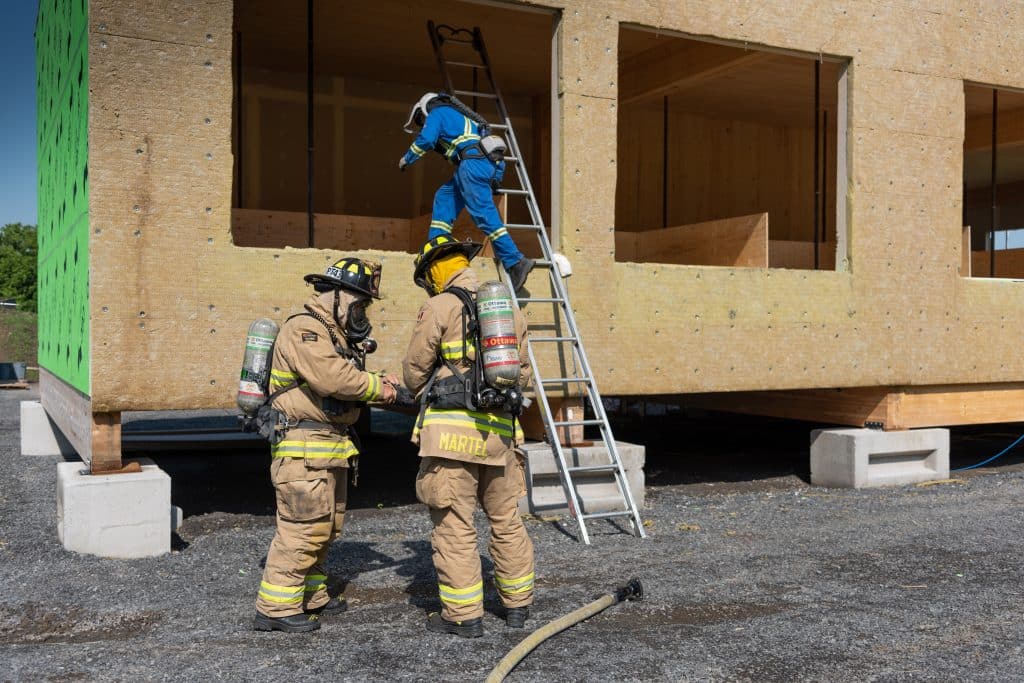
Code national de prévention des incendies du Canada Le Code national du bâtiment du Canada (CNB) et le Code national de prévention des incendies du Canada (CNPI), tous deux publiés par le Conseil national de recherches du Canada (CNRC) et élaborés par la Commission canadienne des codes du bâtiment et de prévention des incendies (CCCBPI), sont des documents complémentaires. Le CNB établit des normes minimales pour la santé et la sécurité des occupants des bâtiments neufs. Il s'applique également à la modification des bâtiments existants, y compris les changements d'occupation. Le CNB n'est pas rétroactif. En d'autres termes, un bâtiment construit conformément à une édition particulière du CNB, en vigueur au moment de sa construction, n'est pas automatiquement tenu de se conformer à l'édition suivante du CNB. Ce bâtiment ne serait tenu de se conformer à une version actualisée du CNB que s'il faisait l'objet d'un changement d'occupation ou de modifications entraînant l'application du nouveau CNB en vigueur au moment du changement d'occupation ou de la modification majeure. Le CNPI traite de la sécurité incendie pendant l'exploitation des installations et des bâtiments. Les exigences du CNPI, quant à elles, visent à garantir le maintien du niveau de sécurité initialement prévu par le CNB. Dans ce but, le CNPI réglemente : la conduite d'activités entraînant des risques d'incendie l'entretien des équipements de sécurité incendie et des moyens d'évacuation les limitations concernant le contenu des bâtiments, y compris le stockage et la manipulation de produits dangereux l'établissement de plans de sécurité incendie Le CNPI est censé être rétroactif en ce qui concerne les systèmes d'alarme incendie, les colonnes montantes et les systèmes d'extinction automatique. En 1990, le CNPI a été révisé pour préciser que de tels systèmes "doivent être installés dans tous les bâtiments lorsque cela est exigé par le Code national du bâtiment du Canada et conformément à ses exigences". Cette disposition garantit que les bâtiments sont correctement protégés contre le risque inhérent au même niveau que celui exigé par le CNB pour un nouveau bâtiment. Il ne concerne pas les autres dispositifs de protection contre l'incendie tels que les mesures de contrôle des fumées ou les ascenseurs pour pompiers. Le CNPI garantit également que les changements d'utilisation des bâtiments n'augmentent pas le risque au-delà des limites des systèmes de protection incendie d'origine. Le CNB et le CNPI sont rédigés de manière à minimiser les risques de conflit entre leurs contenus respectifs. Ils doivent tous deux être pris en compte lors de la construction, de la rénovation ou de l'entretien des bâtiments. Ils sont complémentaires, en ce sens que le CNPI prend le relais du CNB une fois que le bâtiment est en service. En outre, les structures plus anciennes qui ne sont pas conformes au niveau de sécurité incendie le plus récent peuvent être rendues plus sûres grâce aux exigences du CNPI. Les dernières modifications importantes du CNPI concernent la construction de bâtiments de six étages utilisant des matériaux combustibles. En conséquence, huit mesures de protection supplémentaires relatives aux bâtiments combustibles de moyenne hauteur ont été ajoutées pour faire face aux risques d'incendie pendant la construction lorsque les dispositifs de protection contre l'incendie ne sont pas encore en place.
Code de l'énergie
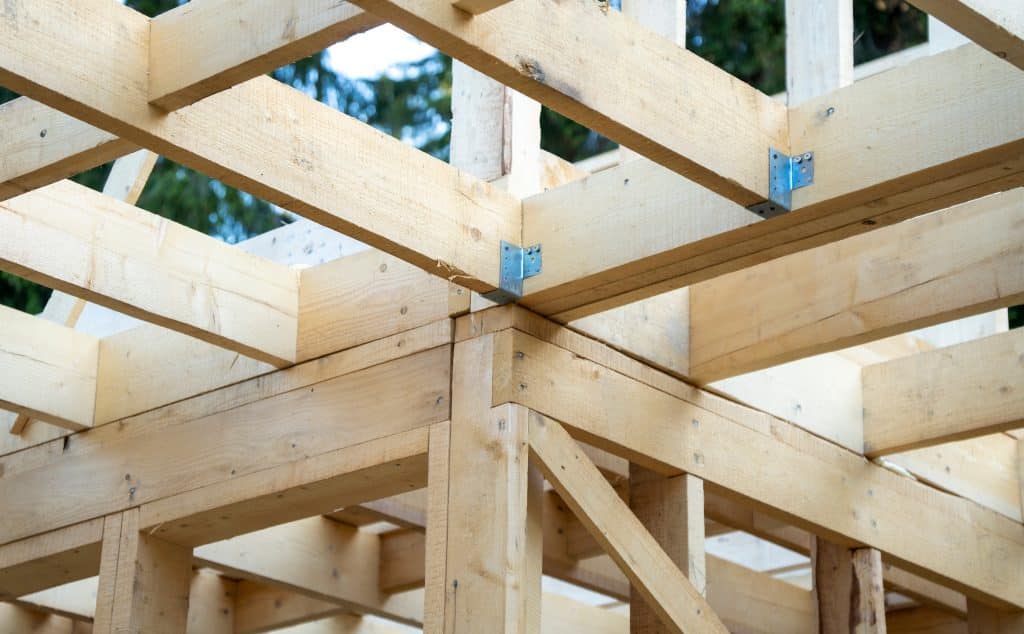
Le Code national de l'énergie pour les bâtiments (CNÉB) vise à aider à économiser sur les factures d'énergie, à réduire la demande d'énergie de pointe et à améliorer la qualité et le confort de l'environnement intérieur des bâtiments. À travers chaque cycle d'élaboration du code, le CNÉB entend mettre en œuvre une approche progressive pour atteindre l'objectif du Canada pour les nouveaux bâtiments, tel que présenté dans le "Cadre pancanadien sur la croissance propre et le changement climatique", qui consiste à réaliser des bâtiments "prêts pour une consommation énergétique nette zéro" d'ici 2030. Le CNÉB est disponible gratuitement en ligne ; il est publié par le Conseil national de recherches du Canada (CNRC) et élaboré par la Commission canadienne des codes du bâtiment et de prévention des incendies en collaboration avec Ressources naturelles Canada (RNCan). La CCB participe en permanence à l'élaboration et à la mise à jour du CNÉB. Le CNÉB définit les exigences techniques en matière de conception et de construction efficaces sur le plan énergétique, ainsi que les niveaux minimaux d'efficacité énergétique pour la conformité au code de tous les nouveaux bâtiments. Le CNEB s'applique à tous les types de bâtiments, à l'exception des logements et des petits bâtiments, qui sont régis par l'article 9.36 du Code national du bâtiment du Canada. Le CNEB offre trois voies de conformité : normative, de compromis et de performance. Le moment le plus rentable pour intégrer des mesures d'efficacité énergétique dans un bâtiment est la phase initiale de conception et de construction. Il est beaucoup plus coûteux d'effectuer des travaux de rénovation plus tard. Cela est particulièrement vrai pour l'enveloppe du bâtiment, qui comprend les murs extérieurs, les fenêtres, les portes et la toiture. Le CMNÉB aborde des considérations telles que les taux d'infiltration d'air (fuites d'air) et la transmission de la chaleur à travers l'enveloppe du bâtiment. Compte tenu des différentes zones climatiques du Canada, le CMNÉB fournit également des exigences relatives à la transmission thermique globale (effective) maximale pour les parois opaques au-dessus du sol et à la résistance thermique effective des assemblages en contact avec le sol, par exemple les fondations permanentes en bois. En outre, le CMNÉB spécifie la fenestration maximale et le rapport porte/mur en fonction de la zone climatique dans laquelle le bâtiment est situé. Les exigences en matière d'efficacité énergétique des bâtiments étant de plus en plus strictes, le bois est une solution naturelle à associer à d'autres matériaux d'isolation et de protection contre les intempéries pour créer des bâtiments ayant une performance énergétique opérationnelle élevée et offrant un confort intérieur constant aux occupants. Pour plus d'informations sur le CNÉB, visitez le site Codes Canada du Conseil national de recherches du Canada.
Acoustique
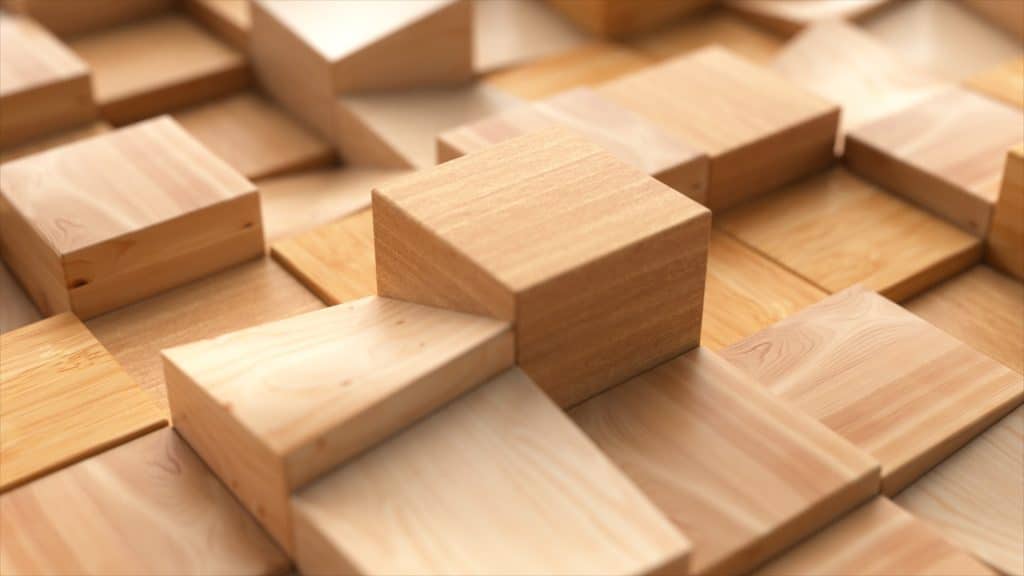
Le bois est composé de nombreux petits tubes cellulaires principalement remplis d'air. La composition naturelle du matériau permet au bois d'agir comme un isolant acoustique efficace et lui confère la capacité d'amortir les vibrations. Ces caractéristiques d'amortissement du son permettent de spécifier des éléments de construction en bois là où l'isolation ou l'amplification du son est nécessaire, comme dans les bibliothèques et les auditoriums. Une autre propriété acoustique importante du bois est sa capacité à limiter la transmission des bruits d'impact, un problème généralement associé aux matériaux et systèmes de construction plus durs et plus denses. L'utilisation d'une chape ou d'un système de plancher flottant superposé à une ossature en bois léger ou à des éléments structurels en bois massif est une approche courante pour assurer la séparation acoustique entre les étages d'un bâtiment. Selon le type de matériaux utilisés dans le système de plancher construit, la chape peut être appliquée directement sur les éléments structurels en bois ou sur une barrière contre l'humidité ou une couche résiliente. L'utilisation de plaques de plâtre, d'isolants absorbants (en matelas ou en vrac) et de profilés souples sont également des éléments essentiels d'un mur ou d'un plancher à ossature bois, qui contribuent également aux performances acoustiques de l'ensemble. La conception acoustique tient compte d'un certain nombre de facteurs, notamment l'emplacement et l'orientation du bâtiment, ainsi que l'isolation ou la séparation des fonctions génératrices de bruit et des éléments du bâtiment. Les indices de transmission du son (STC), de transmission du son apparent (ASTC) et d'isolation contre les chocs (IIC) sont utilisés pour déterminer le niveau de performance acoustique des produits et systèmes de construction. Les différents indices peuvent être déterminés sur la base d'essais normalisés en laboratoire ou, dans le cas des indices ASTC, calculés à l'aide de méthodes décrites dans le CNB. Actuellement, le Code national du bâtiment du Canada (CNB) ne réglemente que la conception acoustique des murs intérieurs et des planchers qui séparent les unités d'habitation (p. ex. appartements, maisons, chambres d'hôtel) d'autres unités ou d'autres espaces dans un bâtiment. Les exigences relatives à l'indice STC pour les murs intérieurs et les planchers visent à limiter la transmission des bruits aériens entre les espaces. Le CNB n'impose aucune exigence en matière de contrôle de la transmission des bruits d'impact par les planchers. Les bruits de pas et autres impacts peuvent être très gênants dans les résidences multifamiliales. Les constructeurs soucieux de la qualité et de la réduction des plaintes des occupants veilleront à ce que les planchers soient conçus de manière à minimiser la transmission des bruits d'impact. En plus de se conformer aux exigences minimales du CNB dans les habitations, les concepteurs peuvent également établir des indices acoustiques pour la conception de projets non résidentiels et spécifier des matériaux et des systèmes pour s'assurer que le bâtiment fonctionne à ce niveau. Outre la limitation de la transmission des bruits aériens par les murs structurels internes et les planchers, la transmission latérale du son par les joints périmétriques et la transmission du son par les cloisons de séparation non structurelles doivent également être prises en compte lors de la conception acoustique. L'annexe A du CNB, aux sections A-9.10.3.1. et A-9.11., contient de plus amples informations et exigences relatives aux indices STC, ASTC et IIC. Cela comprend, entre autres, les tableaux 9.10.3.1-A et 9.10.3.1.-B qui fournissent des données génériques sur les indices STC de différents types de murs à ossature de bois et les indices STC et IIC de différents types d'assemblages de planchers en bois, respectivement. Les tableaux A-9.11.1.4.-A à A-9.11.1.4.-D présentent des options génériques pour la conception et la construction des jonctions entre les assemblages de séparation et les assemblages latéraux. La construction selon ces options est susceptible d'atteindre ou de dépasser la cote ASTC de 47 exigée par le CNB. Tableau A - Le tableau 9.11.1.4. présente des données sur les traitements de plancher génériques qui peuvent être utilisés pour améliorer les performances d'isolation acoustique des planchers à ossature légère, c'est-à-dire des couches supplémentaires de matériau sur le sous-plancher (p. ex. chape de béton, panneaux OSB ou contreplaqué) et le plancher ou les revêtements finis (p. ex. moquette, bois d'ingénierie).
Construction combustible
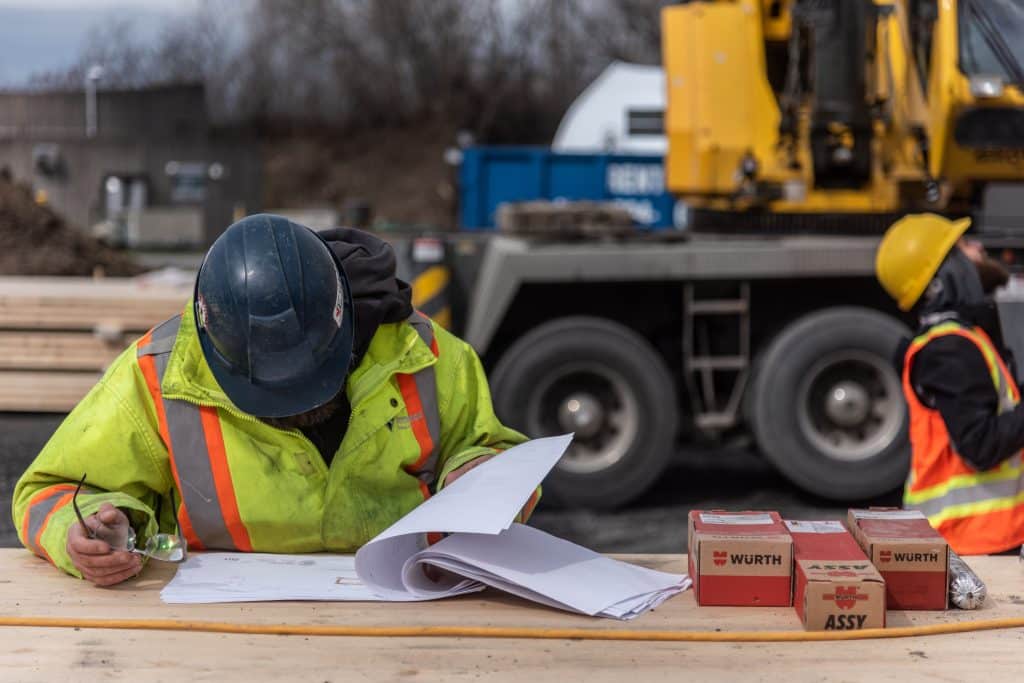
La sécurité incendie dans un bâtiment est une question complexe, bien plus complexe que la combustibilité relative des principaux matériaux structurels utilisés dans un bâtiment. Pour élaborer des dispositions de code sûres, la prévention, l'extinction, le déplacement des occupants, la mobilité des occupants, l'utilisation du bâtiment et le contrôle des combustibles ne sont que quelques-uns des facteurs qui doivent être pris en compte en plus de la combustibilité des éléments structurels. L'expérience des pertes dues aux incendies montre que le contenu des bâtiments joue un rôle important en termes de charge de combustible et de potentiel de génération de fumée dans un incendie. La protection passive contre l'incendie assurée par les degrés de résistance au feu des planchers et des murs d'un bâtiment garantit la stabilité de la structure en cas d'incendie. Cependant, le degré de résistance au feu des structures ne contrôle pas nécessairement le mouvement des fumées et de la chaleur, qui peut avoir un impact important sur le niveau de sécurité et les dommages matériels résultant d'un incendie. Le Code national du bâtiment du Canada (CNB) classe les bâtiments en bois dans la catégorie des "constructions combustibles". Bien qu'elles soient qualifiées de combustibles, les techniques de construction courantes peuvent conférer aux constructions à ossature en bois des degrés de résistance au feu allant jusqu'à deux heures. Lorsqu'ils sont conçus et construits conformément aux exigences du code, les bâtiments en bois offrent le même niveau de sécurité des personnes et de protection des biens que les bâtiments de taille comparable définis par le CNB comme des "constructions non combustibles". Le bois a été utilisé pour pratiquement tous les types de bâtiments, y compris les écoles, les entrepôts, les casernes de pompiers, les immeubles d'habitation et les installations de recherche. Le CNB définit des lignes directrices pour l'utilisation du bois dans des applications qui vont bien au-delà du secteur résidentiel traditionnel et des petits bâtiments. Le CNB autorise les constructions en bois d'une hauteur maximale de six étages, ainsi que les bardages en bois pour les bâtiments désignés comme étant de construction incombustible. Lorsqu'elle respecte les limites de surface et de hauteur pour les différentes catégories de bâtiments du CNB, la construction à ossature bois peut répondre aux exigences de sécurité des personnes en utilisant des assemblages à ossature bois (généralement protégés par des plaques de plâtre) dont le degré de résistance au feu a été testé. Les restrictions de hauteur et de surface autorisées peuvent être étendues en utilisant des murs coupe-feu pour diviser une grande surface de bâtiment en plus petites surfaces distinctes. La contribution positive reconnue à la fois à la sécurité des personnes et à la protection des biens qui découle de l'utilisation de systèmes d'extinction automatique peut également être utilisée pour augmenter la surface autorisée des bâtiments en bois. Les sprinkleurs interviennent généralement très tôt dans un incendie, ce qui permet d'en contrôler rapidement les effets dommageables. C'est pourquoi l'installation d'un système d'extinction automatique dans un bâtiment améliore considérablement la sécurité des personnes et la protection des biens dans tous les bâtiments, y compris ceux construits en matériaux incombustibles. Le CNB autorise l'utilisation d'une "construction en bois massif" dans les bâtiments où la construction combustible doit avoir un degré de résistance au feu de 45 minutes. Cette forme de construction en bois massif est également autorisée dans les grands bâtiments incombustibles de certains usages. Pour être acceptés, les éléments doivent répondre à des exigences minimales en matière de dimensions et d'installation. La construction en bois massif bénéficie de cette reconnaissance en raison de ses performances en cas d'exposition réelle au feu et de son acceptation en tant que méthode de construction sûre en cas d'incendie. Dans les bâtiments protégés par sprinklers dont la construction est autorisée à être combustible, aucun degré de résistance au feu n'est requis pour la toiture ou ses supports lorsqu'ils sont construits en bois massif. Dans ce cas, la toiture en bois massif et ses supports n'ont pas à respecter les dimensions minimales des éléments stipulées dans le CNB. Les éléments en bois massif peuvent également être utilisés chaque fois qu'une construction combustible est autorisée. Dans ce cas, cependant, ces éléments en bois massif doivent être spécifiquement conçus pour satisfaire aux degrés de résistance au feu requis. Définitions du CNB : Combustible signifie qu'un matériau ne répond pas aux critères d'acceptation de la norme CAN/ULC-S114, "Essai de détermination de l'incombustibilité des matériaux de construction". On entend par construction combustible le type de construction qui ne répond pas aux exigences de la construction incombustible. Construction en bois lourd : ce type de construction combustible dans laquelle un certain degré de sécurité incendie est atteint en limitant les dimensions des éléments structurels en bois ainsi que l'épaisseur et la composition des planchers et des toits en bois, et en évitant les espaces cachés sous les planchers et les toits. Construction incombustible : type de construction dans lequel un degré de sécurité incendie est atteint par l'utilisation de matériaux incombustibles pour les éléments de structure et autres assemblages de bâtiments. Incombustible signifie qu'un matériau répond aux critères d'acceptation de la norme CAN/ULC-S114, "Essai de détermination de l'incombustibilité des matériaux de construction". Pour de plus amples informations, veuillez consulter les ressources suivantes : Code national du bâtiment du Canada CAN/ULC-S114 Essai de détermination de l'incombustibilité des matériaux de construction Manuel de conception en bois 2017
Construction en bois massif encapsulé
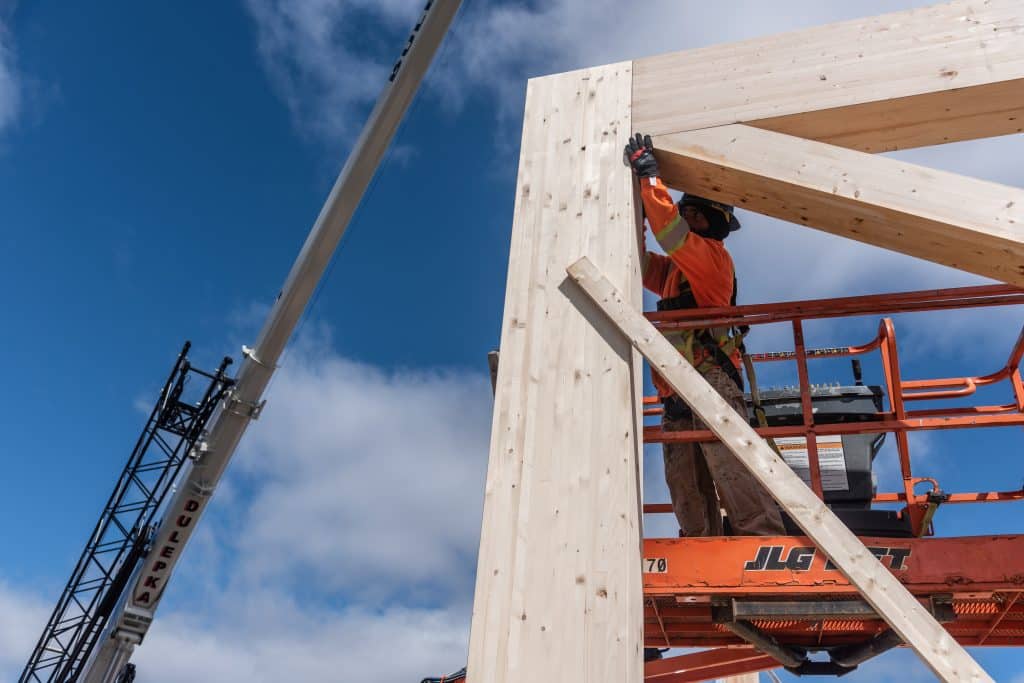
En plus des constructions combustibles, des constructions en bois massif et des constructions incombustibles, un nouveau type de construction est actuellement envisagé pour être inclus dans le Code national du bâtiment du Canada (CNB). Il est proposé de définir la construction en bois massif encapsulé (EMTC) comme le "type de construction dans lequel un degré de sécurité incendie est atteint par l'utilisation d'éléments en bois massif encapsulé avec un indice d'encapsulation et des dimensions minimales pour les éléments structuraux en bois et les autres assemblages du bâtiment". L'EMTC n'est ni une "construction combustible", ni une "construction en bois massif", ni une "construction incombustible", telles que définies dans le CNB. L'EMTC doit avoir une cote d'encapsulation. L'indice d'encapsulation est le temps, en minutes, pendant lequel un matériau ou un assemblage de matériaux retardera l'inflammation et la combustion d'éléments en bois massif encapsulés lorsqu'il est exposé au feu dans des conditions d'essai et selon des critères de performance spécifiés, ou selon d'autres prescriptions du CNB. L'indice d'encapsulation de l'EMTC est déterminé par la méthode d'essai ULC S146. Pour que les éléments structuraux en bois soient considérés comme du "bois de masse", ils doivent répondre à des exigences minimales de taille, qui sont différentes pour les éléments porteurs horizontaux (murs, planchers, toits, poutres) et verticaux (colonnes, arcs) et qui dépendent du nombre de côtés où l'élément est exposé au feu. Au Canada, la construction d'un bâtiment EMTC devrait être limitée à une hauteur de douze étages, c'est-à-dire que le niveau le plus élevé peut se situer au maximum à 42 m (137 pieds) au-dessus du premier étage. Un bâtiment EMTC doit être équipé de gicleurs conformément à la norme NFPA 13 et il est probable qu'une partie du bois de charpente puisse être exposée dans les suites. Tous les éléments de l'EMTC doivent avoir une résistance au feu d'au moins deux heures et la surface au sol du bâtiment doit être limitée à 6 000 m2 pour une occupation du groupe C et à 7 200 m2 pour une occupation du groupe D. Il existe des restrictions quant à l'utilisation de l'extérieur du bâtiment. Il existe des restrictions sur l'utilisation d'éléments de revêtement extérieur dans les EMTC, ainsi que d'autres restrictions sur l'utilisation de matériaux de couverture combustibles, de châssis et de cadres de fenêtres combustibles, d'éléments combustibles dans les murs extérieurs, d'éléments de clouage, d'éléments de plancher combustibles, d'escaliers combustibles, de finitions intérieures combustibles, d'éléments combustibles dans les cloisons et d'espaces cachés. Si un matériau d'encapsulation est endommagé ou enlevé, il devra être réparé ou remplacé de manière à ce que l'indice d'encapsulation des matériaux soit maintenu. En outre, les exigences relatives à la sécurité incendie sur le chantier doivent être appliquées à l'accès au chantier, à l'installation de colonnes d'incendie et à l'encapsulation protectrice. L'EMTC et ses dispositions connexes devraient être incluses dans le CNB 2020. Définitions du CNB : Combustible signifie qu'un matériau ne répond pas aux critères d'acceptation de la norme CAN/ULC-S114, " Essai de détermination de l'incombustibilité des matériaux de construction ". On entend par construction combustible le type de construction qui ne répond pas aux exigences de la construction incombustible. Construction en bois lourd : ce type de construction combustible dans laquelle un certain degré de sécurité incendie est atteint en limitant les dimensions des éléments structurels en bois ainsi que l'épaisseur et la composition des planchers et des toits en bois, et en évitant les espaces cachés sous les planchers et les toits. Construction incombustible : type de construction dans lequel un degré de sécurité incendie est atteint par l'utilisation de matériaux incombustibles pour les éléments de structure et autres assemblages de bâtiments. Incombustible signifie qu'un matériau répond aux critères d'acceptation de la norme CAN/ULC-S114, "Essai de détermination de l'incombustibilité des matériaux de construction". Pour de plus amples informations, veuillez consulter les ressources suivantes : Guide to Encapsulated Mass Timber Construction in the Ontario Building Code ULC S146 Standard Method of Test for the Evaluation of Encapsulation Materials and Assemblies of Materials for the Protection of Mass Timber Structural Members and Assemblies Fire performance of mass-timber encapsulation methods and the effect of encapsulation on char rate of cross-laminated timber (Hasburgh et al., 2016) CAN/ULC-S114 Test for Determination of Non-Combustibility in Building Materials NFPA 13 Standard for the Installation of Sprinkler Systems (Norme NFPA 13 pour l'installation de systèmes de gicleurs).
Sécurité incendie
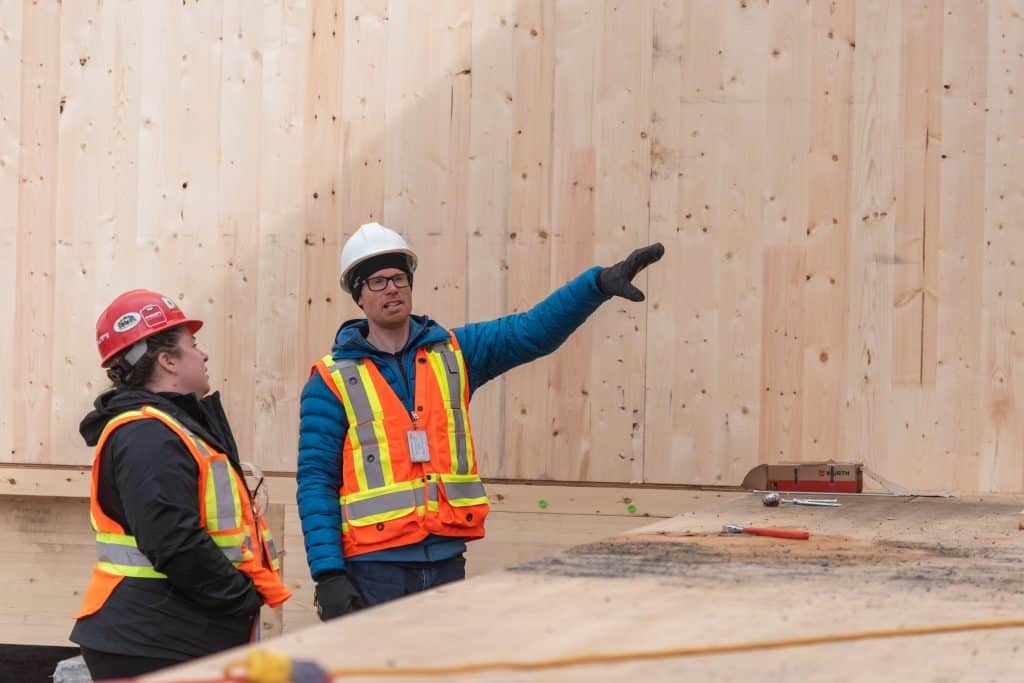
Le Code national du bâtiment du Canada (CNB) définit la sécurité incendie dans l'objectif OS1 : "l'un des objectifs du présent code est de limiter la probabilité qu'en raison de la conception ou de la construction du bâtiment, une personne se trouvant dans le bâtiment ou à proximité de celui-ci soit exposée à un risque inacceptable de blessure en raison d'un incendie". En termes plus simples, la sécurité incendie est la réduction du risque d'atteinte à la vie humaine résultant d'un incendie dans les bâtiments. Bien que le risque d'être tué ou blessé dans un incendie ne puisse être complètement éliminé, la sécurité incendie dans un bâtiment peut être obtenue grâce à des caractéristiques de conception éprouvées visant à minimiser autant que possible le risque d'atteinte à l'intégrité physique par le feu. Concevoir un bâtiment pour garantir un risque minimal ou pour atteindre un niveau prescrit de sécurité contre l'incendie est plus complexe que la simple prise en compte des matériaux de construction qui seront utilisés dans la construction du bâtiment, puisque tous les matériaux de construction sont affectés par le feu. De nombreux facteurs doivent être pris en compte, notamment l'utilisation du bâtiment, le nombre d'occupants, la facilité avec laquelle ils peuvent sortir du bâtiment en cas d'incendie et la manière dont un incendie peut être circonscrit. Même les matériaux qui ne résistent pas au feu ne garantissent pas la sécurité d'une structure. L'acier, par exemple, perd rapidement sa résistance lorsqu'il est chauffé et sa limite d'élasticité diminue considérablement à mesure qu'il absorbe la chaleur, ce qui met en péril la stabilité de la structure. Un système de plancher à poutrelles en acier formé à froid, non protégé, se rompt en moins de 10 minutes selon les méthodes d'essai d'exposition au feu en laboratoire, alors qu'un système de plancher à poutrelles en bois, non protégé, peut durer jusqu'à 15 minutes. Le béton armé n'est pas non plus à l'abri du feu. Le béton s'effrite sous l'effet de températures élevées, exposant l'armature en acier et affaiblissant les éléments structurels. Par conséquent, il est généralement admis qu'il n'existe pas vraiment de bâtiment à l'épreuve du feu. Le CNB ne réglemente que les éléments qui font partie de la construction du bâtiment. Le contenu d'un bâtiment n'est généralement pas réglementé par le CNB, mais dans certains cas, il est réglementé par le Code national de prévention des incendies du Canada (CNPI). La classification des bâtiments ou parties de bâtiments en fonction de leur utilisation prévue tient compte de la quantité et du type de contenu combustible susceptible d'être présent (charge d'incendie potentielle), du nombre de personnes susceptibles d'être exposées à la menace d'un incendie, de la superficie du bâtiment et de sa hauteur. Cette classification est le point de départ pour déterminer quelles exigences de sécurité incendie s'appliquent à un bâtiment particulier. La classification de l'occupation d'un bâtiment au sein du CNB dicte : le type de construction du bâtiment ; le niveau de protection contre l'incendie ; et le degré de protection structurelle contre la propagation du feu entre les parties d'un bâtiment qui sont utilisées à des fins différentes. Les incendies peuvent survenir dans n'importe quel type de structure. La gravité d'un incendie dépend toutefois de la capacité d'une construction à : confiner le feu ; limiter les effets d'un incendie sur la structure porteuse ; et contrôler la propagation de la fumée et des gaz. À des degrés divers, tout type de construction peut être conçu comme un système (combinaison d'ensembles de construction) pour limiter les effets du feu. Cela permet aux occupants de disposer de suffisamment de temps pour évacuer le bâtiment et aux pompiers de s'acquitter de leurs tâches en toute sécurité. La sécurité des occupants dépend également d'autres paramètres tels que la détection, les voies d'évacuation et l'utilisation de systèmes d'extinction automatique d'incendie tels que les sprinklers. Ces concepts constituent la base des exigences du CNB. Pour de plus amples informations, veuillez consulter les ressources suivantes : Wood Design Manual (Conseil canadien du bois) Fire Safety Design in Buildings (Conseil canadien du bois) Code national du bâtiment du Canada Code national de prévention des incendies du Canada CSA O86, Engineering design in wood Fitzgerald, Robert W., Fundamentals of Fire Safe Building Design, Fire Protection Handbook, National Fire Protection Association, Quincy, MA, 1997. Watts, J.M. (Jr) ; Systems Approach to Fire-Safe Building Design, Fire Protection Handbook, National Fire Protection Association, Quincy, MA, 2008. Rowe, W.D. ; Assessing the Risk of Fire Systemically ASTM STP 762, Fire Risk Assessment, American Society for Testing and Materials, West Conshohocken, PA, 1982.
Propagation de la flamme

La propagation de la flamme est principalement une caractéristique de combustion superficielle des matériaux, et l'indice de propagation de la flamme est un moyen de comparer la vitesse de propagation de la flamme à la surface d'un matériau par rapport à un autre. Les exigences en matière d'indice de propagation de la flamme sont appliquées dans le Code national du bâtiment du Canada (CNB), principalement pour réglementer les finitions intérieures. Tout matériau faisant partie de l'intérieur du bâtiment et directement exposé est considéré comme une finition intérieure. Cela comprend les revêtements intérieurs, les planchers, les moquettes, les portes, les garnitures, les fenêtres et les éléments d'éclairage. Si aucun revêtement n'est installé du côté intérieur d'un mur extérieur d'un bâtiment, les surfaces intérieures de l'ensemble des murs sont considérées comme la finition intérieure, par exemple, une construction à poteaux et à poutres non finie. De même, si aucun plafond n'est installé sous un plancher ou un toit, le tablier et les éléments structuraux exposés non finis sont considérés comme la finition intérieure du plafond. La méthode d'essai normalisée à laquelle le CNB fait référence pour la détermination des indices de propagation de la flamme est la norme CAN/ULC-S102, publiée par ULC Standards. L'annexe D-3 de la division B du CNB fournit des renseignements sur les indices génériques de propagation de la flamme et les classifications de dégagement de fumée de divers matériaux de construction. Ces informations ne concernent que les matériaux génériques pour lesquels il existe de nombreuses données d'essais au feu (voir le tableau 1 ci-dessous). Par exemple, le bois d'œuvre, quelle que soit l'essence, et le contreplaqué de sapin de Douglas, de peuplier et d'épicéa, d'une épaisseur au moins égale à celles indiquées, se voient attribuer un indice de propagation de la flamme de 150. En général, pour les produits en bois d'une épaisseur inférieure à 25 mm (1 pouce), l'indice de propagation de la flamme diminue avec l'augmentation de l'épaisseur. Les valeurs indiquées dans l'annexe D du CNB sont prudentes car elles sont destinées à couvrir une large gamme de matériaux. Des essences et des épaisseurs spécifiques peuvent avoir des valeurs bien inférieures à celles indiquées dans l'annexe D. Les valeurs spécifiques par essence de bois sont indiquées dans la fiche d'information sur l'inflammabilité des surfaces et la propagation des flammes, ci-dessous. Des informations sur les matériaux brevetés et ignifuges sont disponibles auprès d'organismes de certification et d'homologation tiers ou auprès des fabricants. Les valeurs indiquées dans la fiche d'information sur l'inflammabilité de surface et la propagation de la flamme s'appliquent au bois d'œuvre fini ; toutefois, aucune différence significative n'a été observée dans l'indice de propagation de la flamme du bois d'œuvre brut de sciage de la même essence. L'American Wood Council fournit des informations complémentaires dans sa publication Design for Code Acceptance, DCA 1 Flame Spread Performance of Wood Products for the U.S. Normalement, la finition de la surface et le matériau sur lequel elle est appliquée contribuent tous deux à la performance globale en matière de propagation de la flamme. La plupart des revêtements de surface tels que la peinture et le papier peint ont généralement une épaisseur inférieure à 1 mm et ne contribuent pas de manière significative à l'évaluation globale. C'est pourquoi le CNB attribue le même indice de propagation de la flamme et de dégagement des fumées à des matériaux courants tels que le contreplaqué, le bois de construction et les plaques de plâtre, qu'ils soient bruts ou recouverts de peinture, de vernis ou de papier peint cellulosique. Il existe également des peintures et des revêtements ignifuges spéciaux qui peuvent réduire considérablement l'indice de propagation de la flamme d'une surface intérieure. Ces revêtements sont particulièrement utiles lors de la réhabilitation d'un bâtiment ancien pour réduire l'indice de propagation de la flamme des matériaux de finition à des niveaux acceptables, en particulier pour les zones nécessitant un indice de propagation de la flamme inférieur ou égal à 25. En général, le CNB fixe à 150 l'indice maximal de propagation de la flamme pour les finitions intérieures des murs et des plafonds, ce qui peut être respecté par la plupart des produits en bois. Par exemple, le contreplaqué de sapin Douglas de 6 mm (1/4 po) peut être non fini, peint, verni ou recouvert d'un papier peint cellulosique conventionnel. Cette solution a été jugée acceptable sur la base de l'expérience réelle en matière d'incendie. Cela signifie que dans toutes les zones où un indice de propagation de la flamme de 150 est autorisé, la majorité des produits en bois peuvent être utilisés comme finitions intérieures sans exigences particulières en matière de traitements ou de revêtements ignifuges. Lors d'un incendie dans une pièce, le revêtement de sol est généralement le dernier élément à s'enflammer, car la couche d'air la plus froide se trouve à proximité du sol. C'est pourquoi le CNB, comme la plupart des autres codes, ne réglemente pas l'indice de propagation de la flamme des revêtements de sol, à l'exception de certaines zones essentielles dans les bâtiments de grande hauteur : les sorties, les couloirs ne se trouvant pas dans les suites, les cabines d'ascenseurs et les locaux techniques. Les matériaux de revêtement de sol traditionnels, tels que les parquets et les moquettes, peuvent être utilisés presque partout dans les bâtiments, quel que soit leur type de construction. Pour plus d'informations, consultez les ressources suivantes : Wood Design Manual (Conseil canadien du bois) Fire Safety Design in Buildings (Conseil canadien du bois) Code national du bâtiment du Canada Code national de prévention des incendies du Canada CSA O86, Engineering design in wood CAN/ULC-S102 Standard Method of Test for Surface Burning Characteristics of Building Materials and Assemblies American Wood Council Tableau 1 : Indices de propagation de la flamme et classifications du dégagement de fumée attribués Indices d'inflammabilité et de propagation de la flamme de la surface

